Everything About
Inhalers
Watch & Learn

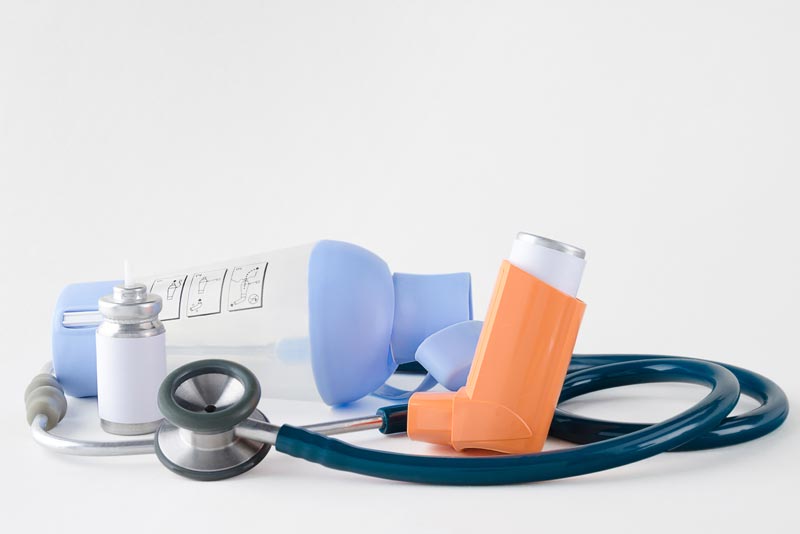
An inhaler is a handheld device used for delivering inhaled medications into the lungs through breathing. Using inhalers helps in the direct dispensing of medicine to target organs (lungs and airways) and help in providing quick relief in breathing troubles. Inhalers are used for treating various respiratory diseases, including Asthma and COPD (chronic obstructive pulmonary diseases).
Across the globe, inhalers are one of the most effective ways to deliver inhaled medication in treating breathing problems.
Nowadays, a broad range of inhalers are available to treat breathing problems. Your doctor can prescribe the most suitable inhaler for you as per your individual symptoms and disease condition. Using an inhaler correctly requires proper training to deliver an adequate dose of medication to lungs. Improper technique might lead to reduced administration of a recommended dose, which results in poor disease control and relapsing of symptoms.
Using inhalers to treat breathing problems offers many benefits. Apart from the fact that inhalers help in the direct delivery of medicine to the target organs (lungs and airway), it also helps in quick relief of symptoms compared to oral medication.
Oral medication travels through the bloodstream and then reaches the lungs. This process takes more time, requires a higher dose of medicine and causes more side effects. On the other hand, inhaled medications with inhalers take less time, lower dose of medication and cause fewer side effects.
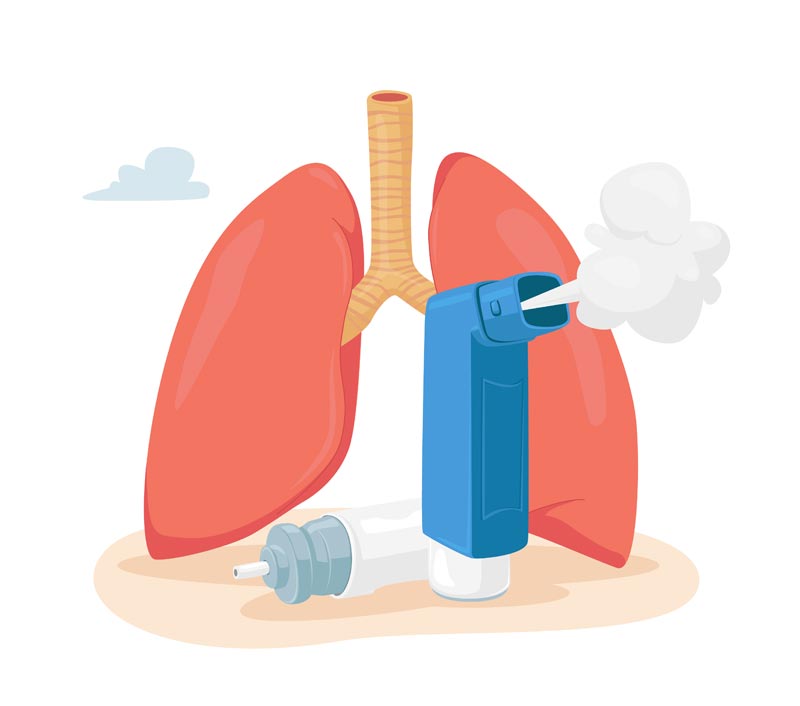
Inhalers are classified into two categories: controller inhalers and rescue inhalers. Controller inhalers are used for delivering long-term controlled medications. These inhalers are used regularly and help in the long-term control of asthma symptoms, while rescue inhalers are used for delivering a quick relief or rescue medications. They are used intermittently to relieve asthma symptoms. They help in quick delivery of inhaled medications and provide great help in controlling life-threatening asthma attack symptoms. Recently, the concept of using 2 different inhalers has been updated to using one single inhaler. This form of therapy is called SMART therapy. SMART therapy for asthma means needing only one inhaler for both “daily” and “rescue” asthma treatment. A SMART treatment inhaler contains two medications: a steroid and a particularly long-acting beta-2 agonist (LABA) called formoterol.
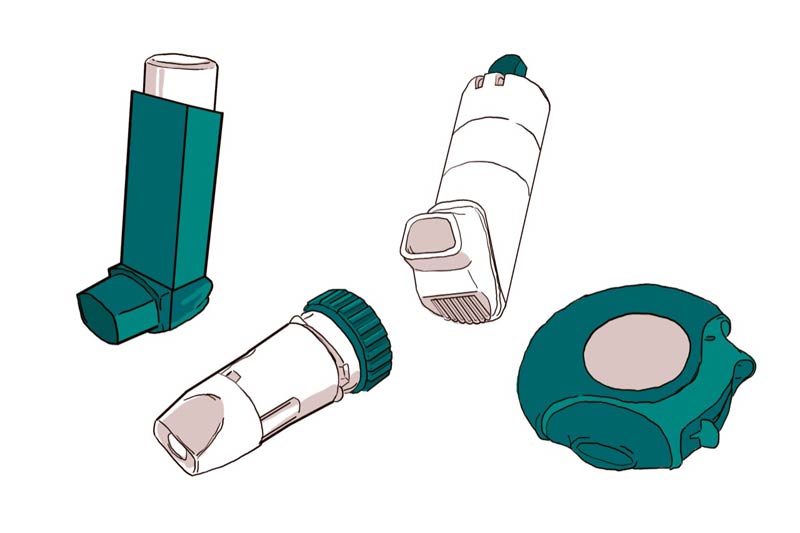
There are mainly three types of inhalers that are used to deliver inhaled medications.
Metered dose inhalers are among the most commonly used inhalers. They help in delivering an exact amount of inhaled medication through your mouth, into the lung.
Metered dose inhalers are widely used to treat asthma and COPD. They are used for delivering various kinds of inhaled medications, including bronchodilators and corticosteroids.
Each metered dose inhaler consists of four parts: a canister, a mouthpiece, a mouthpiece cap and an actuator. Some metered dose inhalers also come with a dose counter. Canister (made up of aluminum or stainlessness) contains medicine to be inhaled in liquid form. Mouthpiece (made up of plastic) allows the dispensing of medicine from mouth to lungs. The mouthpiece cap covers the mouthpiece. The dose counter counts the number of the dose in the inhaler. When the dose counter shows zero as a number, it indicates that there is no medicine left in the inhaler. You need to discard the empty inhaler.
After pressing down the canister part, a preset amount of medication is released in the aerosol form (mist). This mist can be easily inhaled via mouth to enter the lungs.
Using metered dose inhalers requires exact coordination between delivering the dose of medicine and inhalation. It is important to learn the correct technique of using metered dose inhalers. The wrong technique results in less deposition of medication into your lungs and can cause poor control of asthma symptoms. Improper coordination also causes sticking of medication in the mouth and oral cavity and develops many side effects like fungal infection.
To overcome the co-ordination errors associated with metered dose inhalers, spacers are used. Spacers are a holding chamber; they have a mouthpiece at one end. On another end, you can fit your inhaler. An inhaler, once actuated, delivers the medication in the spacer. Using a spacer extends the amount of time it takes for the medication to enter the lungs. This gives the person more time to inhale, so the medication can enter the lungs more effectively. The spacer also concentrates the medication into a tube, which prevents it from escaping into the air. Spacers are especially helpful for younger children or people just starting to use an inhaler.
Dry powder inhalers are another commonly used inhalers for delivering asthma medications. In this type of inhaler, dry powder medication is used. Dry powder inhalers contain a chamber where the fixed-dose of medicine is placed before inhalation. These inhalers are activated by breathing. You have to breathe in strong and deep to deliver the preset dose of powder medication into the lungs.
Some dry powder inhalers come with a preloaded dose of medication, while for some, you have to load a fixed dose of medication each time you use it.
They are easy to use than metered dose inhalers. These inhalers do not require hand-breath coordination like metered dose inhalers. But the inspiratory flow (force with which a person can inhale via mouth) is necessary to achieve the therapeutic effect with dry powder inhalers. Also, you cannot use spacers with dry powder inhalers. This is one of the major limitations of dry powder inhalers.
Nebulizers are often used for infants, small kids and for those patients who have severe difficulty in breathing. They are mostly used in hospitals to treat asthma attacks when a larger dose of inhaled medications are needed to treat flare-up symptoms.
Nebulizers covert the liquid asthma medicine into mist form. For using nebulizers, there is no need to make any breathing coordination. You have to just breathe in through a mouthpiece or a mask above the medicine container to inhale the mist.
Different types of inhalers require distinctive techniques to use. When your doctor prescribes an inhaler for your breathing trouble, ask him the type of inhaler and medication that you are going to use. Understand the proper technique before starting the use the inhaler.
Here is a step-by-step process to use a pressurized metered dose inhaler.
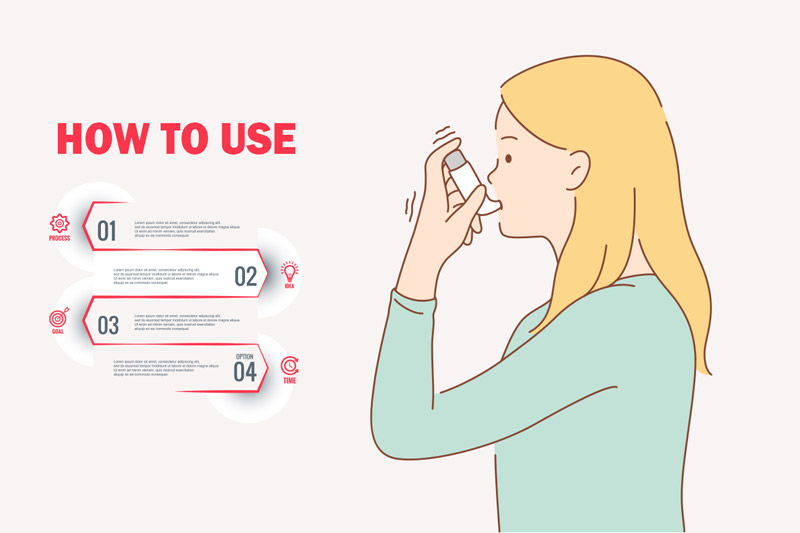

Not learning or understanding the correct technique of using your prescribed inhaler:
Using an inhaler properly requires proper training and education from your doctor or health care provider. Nowadays, different inhalers are used in different cases. You need to understand the correct technique depending on the type of inhaler that you have been prescribed. Many patients (approximately 94%) forget to follow the correct technique, which results in inadequate dispensing of a dose. This common mistake eventually leads to poor control of asthma symptoms.
Forgetting to “Prime” the inhaler before using it
“Priming” your inhaler (in simple words spray 1-2 dose into the air) is a must if you are using the inhaler for the first time or it has been not used in the last one week. You need to read and follow the instructions for “Priming” on your prescribed inhaler. Otherwise, you could get the improper mixture of propellant and medicine.
Not shaking your inhaler before using it
Most of the metered dose inhalers require shaking before using it. Shaking your inhaler is an important step that helps in the proper mixing of medication and propellent. Many people forget to shake their inhaler. It results in improper mixing of medicine and propellant. With this mistake, you will not get the right amount of medication.
Improper posture
It is important to keep a proper posture while using inhaler. You need to uplift your chin slightly and should stand or sit in an upright position while using inhalers. If you slouch or put your head forward or backward, then it will affect the medicine delivering process and create a problem in the way the medicine reaches into your lungs and airways.
Not following the exact inhalation technique
It is important to breathe out fully before taking a dose. Exhaling completely helps in making room in the lungs to absorb inhaled medicine. In the same way, you need to develop the coordination between medicine inhalation and your breathing process. If you breathe too early or too late, it results in the medicine sticking in your mouth or the back of your throat, instead of reaching to your lung.
Not keeping a tight seal around the inhaler
You need to hold the inhaler properly by making a total lip seal around your inhaler. If you hold the inhaler loosely in the mouth or there are gaps in the lips when the medicine is pumped, then the medicine might come out from the side of the mouth. This mistake wastes the medicine and you will not get the prescribed dose.
Not waiting for one minute before taking the next dose
With some inhalers (like with metered dose inhalers) it is important to wait and keep a gap of 1 minute between two doses of the inhaler puffs.
Forget to rinse your mouth after taking a corticosteroid inhaler
Rinsing your mouth with water is an important step to avoid side effects (fungal infection) after using a corticosteroid inhaler.
Myth: 1 Inhaler contains steroids which are harmful and may cause various side effects like weakness of bones and stunt growth in children.
Fact 1: Inhaler contains a tiny amount of steroid, in micrograms. It is 1000 times less than the dose in oral steroids (milligrams). Inhalers work through the inhalation process and are not absorbed through the body like oral medication, so they have minimum side effects. They are essential for controlling inflammatory asthma symptoms. If steroid inhaler is not used for treating asthma symptoms, it can aggravate the existing symptoms that may lead to an asthma attack and cause irreversible damage to your lungs.
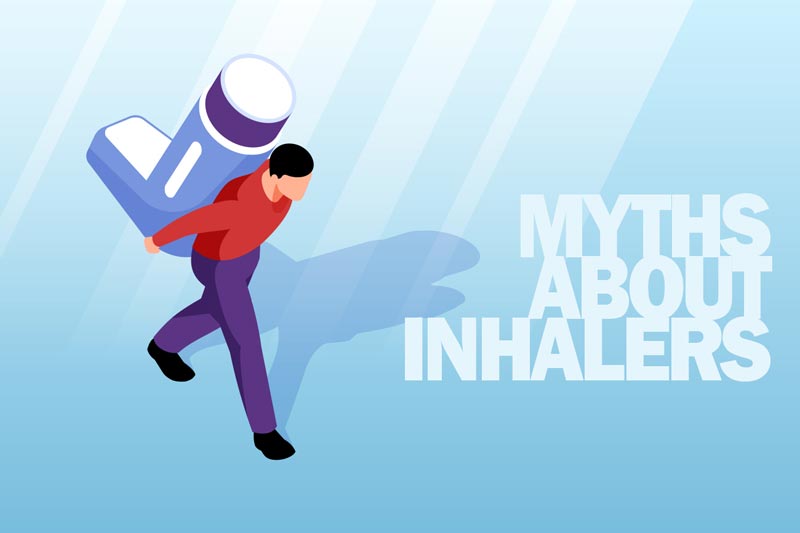
Myth: 2 Using inhalers are addictive or habit forming.
Fact 2: Asthma is a chronic inflammatory disease of lungs that has no cure. Using inhaler is the best way to control inflammation in lungs and keep the symptoms under control and avoid asthma attack (flare-ups). Inhalers are not addictive; they act as a lifeline for asthma patients to treat their breathing troubles. Inhalers help asthma patients live an active life.
Myth: 3 Inhalers are used only for treating severe cases of asthma.
Fact 3: Inhalers are the first line of treatment for asthma and are the most effective way to control asthma symptoms. Asthma is a chronic disease that requires lifelong management. Using inhalers helps in controlling asthma symptoms. You should use it regularly, even when you have fewer or no symptoms.
Myth: 4 Oral asthma medications are more effective than inhalers.
Fact 4: Oral medications travel through the bloodstream and then reach the lungs, while inhaled medication reaches directly to the lungs through breathing. Inhalers and inhaled medications are way more effective than oral medications in the treatment of asthma.
Myth: 5 Asthma is curable and you can stop taking inhalers when symptoms improve.
Fact 5: Asthma is a chronic inflammatory disease that has no cure. But you can control asthma symptoms completely with proper medication and lifestyle modification. You should not stop using inhalers, even when you have an improvement in symptoms or have no symptoms. Your symptoms can return with greater intensity if you stop using the inhaler or prescribed medication. Any changes in the prescribed medication or inhalers should be done only after proper consultation with the doctor.
© 2025 Healthy Lungs.